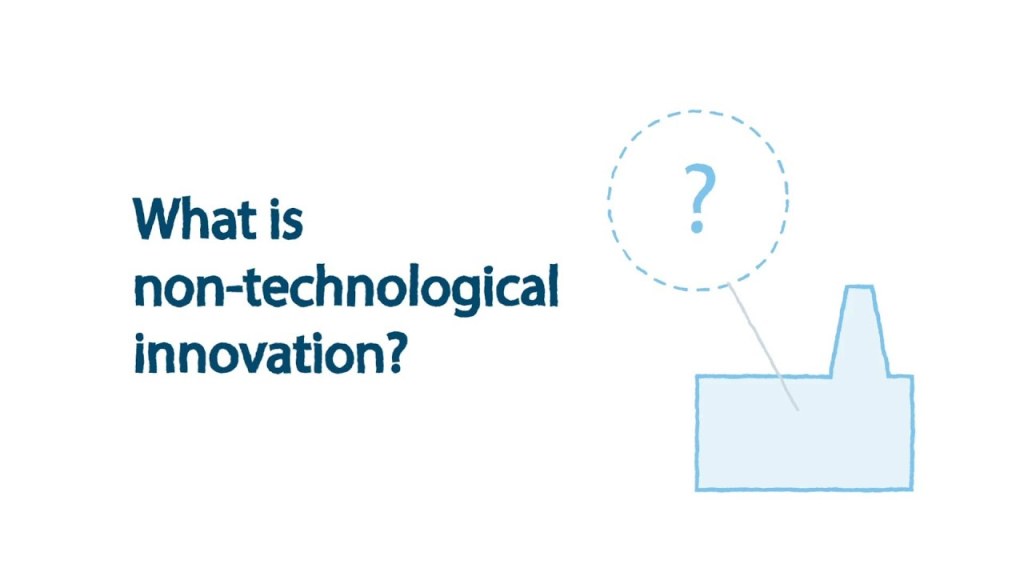Discover Fascinating Technological Innovation Non-Examples: Unveiling The Boundaries Of Progress!
Technological Innovation Non Examples: Exploring the Boundaries of Innovation
Greetings, Readers! In today’s fast-paced world, technological innovation has become a ubiquitous term. It refers to the process of creating and developing new technologies that enhance our lives and transform various industries. However, it is equally important to explore the other side of the coin by examining technological innovation non examples, which represent instances where innovation is absent or misdirected. By understanding what does not qualify as technological innovation, we can gain valuable insights into the boundaries and limitations of this concept. In this article, we will delve into different aspects of technological innovation non examples and shed light on their significance.
Table of Contents
What are Technological Innovation Non Examples?
Who is Affected by Technological Innovation Non Examples?
When Do Technological Innovation Non Examples Occur?
Where Can Technological Innovation Non Examples Be Found?
Why Do Technological Innovation Non Examples Happen?
How Can We Learn from Technological Innovation Non Examples?
Advantages and Disadvantages of Technological Innovation Non Examples
Frequently Asked Questions about Technological Innovation Non Examples
Conclusion
Final Remarks
1 Picture Gallery: Discover Fascinating Technological Innovation Non-Examples: Unveiling The Boundaries Of Progress!

What are Technological Innovation Non Examples? 🤔
Technological innovation non examples refer to situations or instances where there is a lack of innovation or a failure to introduce new technologies. These examples can be found in various domains, including business, education, healthcare, and transportation. It is important to identify and analyze these non examples to better understand the boundaries and limitations of technological innovation.
Understanding the Boundaries of Innovation

Image Source: ytimg.com
By exploring technological innovation non examples, we can gain a clearer understanding of what constitutes true innovation. These non examples often showcase outdated technologies, stagnant industries, or resistance to change. They provide valuable insights into the challenges faced by organizations and individuals when it comes to embracing new technologies and driving progress.
Identifying Areas for Improvement
Technological innovation non examples highlight areas that require attention and improvement. They serve as a reminder that innovation is not guaranteed and that it requires deliberate effort and strategic decision-making. By studying these non examples, organizations can identify gaps in their innovation strategies and work towards overcoming them.
Learning from Mistakes
Non examples of technological innovation also provide opportunities to learn from past mistakes. By examining failed attempts at innovation, we can identify common pitfalls and avoid making the same errors in our own endeavors. Learning from these mistakes can save resources, time, and effort, enabling organizations to make more informed decisions and increase the likelihood of successful innovation.
Distinguishing Innovation from Incremental Improvements
Technological innovation non examples help us differentiate between true innovation and incremental improvements. While incremental improvements are essential for progress, they do not necessarily represent groundbreaking innovations. By studying non examples, we can better understand the characteristics and elements that set true innovation apart from incremental changes.
Examining Social and Ethical Implications
Non examples of technological innovation also shed light on the social and ethical implications of innovation. They prompt us to reflect on the potential negative consequences of certain technologies or the unequal distribution of innovation benefits. By considering these aspects, we can work towards more responsible and inclusive innovation practices.
Recognizing the Importance of Disruption
Lastly, technological innovation non examples highlight the importance of disruption and transformative change. They emphasize the need to challenge the status quo and break away from conventional thinking. By studying these non examples, we can foster a culture of innovation that embraces calculated risks and encourages bold ideas.
Who is Affected by Technological Innovation Non Examples? 🌍
Technological innovation non examples have far-reaching effects on various stakeholders. These include:
Businesses and Industries
Innovative businesses and industries are directly impacted by technological innovation non examples. They face the risk of falling behind their competitors and losing market share if they fail to keep up with technological advancements. Non examples serve as a wake-up call for organizations, urging them to constantly evolve and strive for innovation.
Employees and Job Seekers
Technological innovation non examples can have significant implications for employees and job seekers. If industries fail to innovate, job opportunities may become scarce, and certain skills could become obsolete. Understanding and learning from non examples can help individuals identify areas for upskilling and stay relevant in the job market.
Consumers
Consumers are indirectly affected by technological innovation non examples. Lack of innovation in certain industries can result in limited choices, outdated products or services, and higher prices. By recognizing non examples, consumers can make informed decisions and support innovative companies that prioritize their needs.
Society at Large
Technological innovation has the potential to bring about positive societal transformations. However, non examples illustrate the consequences of neglecting innovation or misdirecting it towards unsustainable goals. Understanding these non examples allows societies to make more conscious choices and leverage technology for the greater good.
When Do Technological Innovation Non Examples Occur? ⌛
Technological innovation non examples can occur at various stages of an organization’s lifecycle and across different industries. Some common scenarios where non examples arise include:
Resistance to Change
When organizations resist change and fail to adapt to evolving technologies, non examples of innovation emerge. This can be due to factors such as a fear of uncertainty, lack of awareness, or an aversion to risk.
Outdated Technologies
Industries that rely on outdated technologies or fail to embrace advancements can become non examples of innovation. This often occurs when organizations become complacent and overlook the need for continuous improvement.
Unwillingness to Invest in Research and Development
Technological innovation requires investment in research and development (R&D). When organizations neglect or underestimate the importance of R&D, they risk becoming non examples of innovation.
Lack of Collaboration and Openness
Innovation thrives on collaboration and openness to new ideas. Non examples arise when organizations operate in silos, fail to collaborate with external stakeholders, or disregard feedback and insights from their employees and customers.
Overemphasis on Short-Term Goals
When organizations prioritize short-term goals over long-term innovation, they may overlook crucial opportunities for advancement. Non examples often result from a narrow focus on immediate profits rather than investing in future growth.
Regulatory and Legal Constraints
Regulatory and legal constraints can hinder innovation in certain industries. Non examples may arise when organizations face excessive bureaucracy, outdated regulations, or legal barriers that prevent the adoption of new technologies.
Market Saturation
In highly saturated markets, non examples can emerge when organizations struggle to differentiate themselves and introduce novel and disruptive solutions. Market saturation can lead to a lack of innovation and a reliance on incremental improvements rather than groundbreaking ideas.
Where Can Technological Innovation Non Examples Be Found? 📍
Technological innovation non examples can be found across various sectors and industries. Some common areas where non examples are prevalent include:
Traditional Manufacturing
Traditional manufacturing industries that fail to embrace automation, digitalization, and advanced production techniques can become non examples of technological innovation.
Education
Education systems that do not adapt to the changing needs of students and society can serve as non examples of technological innovation. This includes outdated teaching methods, resistance to digital learning tools, and a lack of investment in educational technology.
Government Services
Government agencies that rely on outdated systems, paperwork-intensive processes, and inefficient bureaucratic structures can become non examples of technological innovation. This can lead to delays, inefficiencies, and a failure to meet citizens’ needs effectively.
Healthcare
In the healthcare sector, non examples of technological innovation can be found in practices that do not leverage advanced medical technologies, electronic health records, telemedicine, or personalized medicine.
Transportation
Transportation companies that resist the adoption of electric vehicles, autonomous driving technologies, or sustainable transportation solutions can be considered non examples of technological innovation.
Financial Services
Financial institutions that overlook digital banking, mobile payment systems, and blockchain technology can become non examples of technological innovation. This can lead to suboptimal customer experiences and missed opportunities for growth.
Why Do Technological Innovation Non Examples Happen? 🤷♂️
Technological innovation non examples occur due to various factors and challenges. Some common reasons behind these non examples include:
Resistance to Change
One of the prominent reasons for technological innovation non examples is resistance to change. Organizations and individuals may be hesitant to adopt new technologies due to a fear of the unknown, uncertainty about the benefits, or concerns about potential disruptions.
Inadequate Resources
Limited resources can hinder innovation and lead to non examples. Lack of funding, skilled personnel, or access to necessary infrastructure can prevent organizations from investing in research, development, and implementation of new technologies.
Outdated Mindsets and Cultures
Organizational cultures that value tradition over innovation can become non examples of technological advancement. Outdated mindsets and resistance to new ideas can hinder progress and prevent organizations from embracing innovative solutions.
Regulatory and Legal Constraints
Strict regulations, legal barriers, and bureaucratic processes can impede innovation in certain industries. Non examples often arise when organizations face difficulties navigating complex regulatory frameworks or when outdated laws do not accommodate emerging technologies.
Lack of Awareness and Education
Non examples can occur when individuals and organizations lack awareness about the potential benefits and applications of new technologies. Insufficient education and training can lead to a lack of understanding, hindering the adoption of innovative solutions.
How Can We Learn from Technological Innovation Non Examples? 📚
Technological innovation non examples provide valuable learning opportunities for individuals, organizations, and society as a whole. Here are some key takeaways:
Identify Barriers to Innovation
By studying non examples, we can identify common barriers to innovation, such as resistance to change, inadequate resources, or regulatory constraints. Recognizing these barriers allows us to devise strategies to overcome them and foster a more innovative environment.
Encourage a Culture of Innovation
Non examples highlight the importance of fostering a culture that encourages and rewards innovation. By promoting a mindset of curiosity, experimentation, and risk-taking, organizations can create an environment where innovation thrives.
Focus on User-Centric Design
Non examples often arise when organizations neglect the needs and preferences of their users. By prioritizing user-centric design and involving users in the innovation process, organizations can ensure that their solutions address real problems and provide meaningful value.
Embrace Collaboration and Partnerships
Collaboration and partnerships can be powerful drivers of innovation. Non examples emphasize the importance of working together with external stakeholders, such as customers, suppliers, and research institutions, to leverage diverse perspectives and expertise.
Invest in Research and Development
Non examples serve as a reminder of the critical role played by research and development (R&D) in driving innovation. Investing in R&D allows organizations to stay at the forefront of technology and develop groundbreaking solutions.
Learn from Failure
Non examples are often the result of failed innovation attempts. By embracing failure as a learning opportunity, organizations can iterate and improve their innovation strategies. Learning from past mistakes is essential for future success.
Consider Ethical and Societal Implications
Technological innovation should be accompanied by a consideration of its ethical and societal implications. Non examples remind us of the importance of responsible and inclusive innovation that benefits all members of society and avoids potential harm.
Advantages and Disadvantages of Technological Innovation Non Examples 📊
Technological innovation non examples come with their own set of advantages and disadvantages. Let’s explore both sides:
Advantages of Technological Innovation Non Examples
Insight into Potential Pitfalls
Non examples offer insights into potential pitfalls and mistakes that can be avoided. By learning from these examples, organizations can minimize risks and increase the likelihood of successful innovation.
Rethinking Strategies
Studying non examples allows organizations to reflect on their current strategies and consider alternative approaches. It prompts a fresh perspective and encourages organizations to challenge conventional thinking.
Opportunities for Disruption
Non examples highlight areas where there is room for disruptive innovation. By identifying these opportunities, organizations can break away from established norms and create new markets or transform existing ones.
This post topic: Technology Innovation

